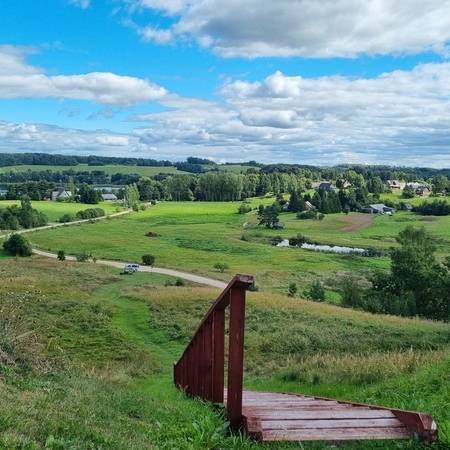The majestic and picturesque hillfort (as many as eight surrounding churches can be seen from its site) expands the story of happiness in the Baltic culture with the motif of individual struggle and sacrifice for the well-being and happiness of the entire nation. Such were the values and attitudes of the Lithuanian partisans, adopted from the Lithuanian volunteers of 1918-1920 - participants of the Independence struggles and to a certain extent from the contemporaries of the 1863-1864 uprising. The hillfort standing on the southwestern shore of Lake Vidinkstas, also called the Swedish battery, dates back to the 1st millennium BC II millennium AD. The site is quadrangular, elongated in the north-south direction, and 48x41 meters in size. The site has a cultural layer up to 35 cm thick, consisting of dark soil, with pillar places, the remains of hearths and archaeological finds. In it, a cross was built in 1918 (restored in 1989 and 1998), and there are 4 graves of partisans. The slopes of the mound are steep, 25 meters high, and a system of protective ditches and ramparts has been preserved in them. There was an ancient settlement at the foot of the hillfort. The surviving storey is that fairies covered the hillfort with aprons. Others say that people filled the hillfort with iron caps, that there is something in the hillfort - a church or a castle was filled and that during Easter time the mountain opened and people walked around it, it was seen that gold was burning on the hillfort and in the fields... Next to Pakalniai Hillfort, there is a round hill called Laumė’s apron. The legend tells that the fairies, after covering the hillfort with their aprons, had to dump their litter in this place after the roosters crowed... As a cultural asset, Laumė’s apron is protected by the state, and the Pakalniai mound has been given the status of a monument.

+3


.jpg)
.jpg)

Reviews